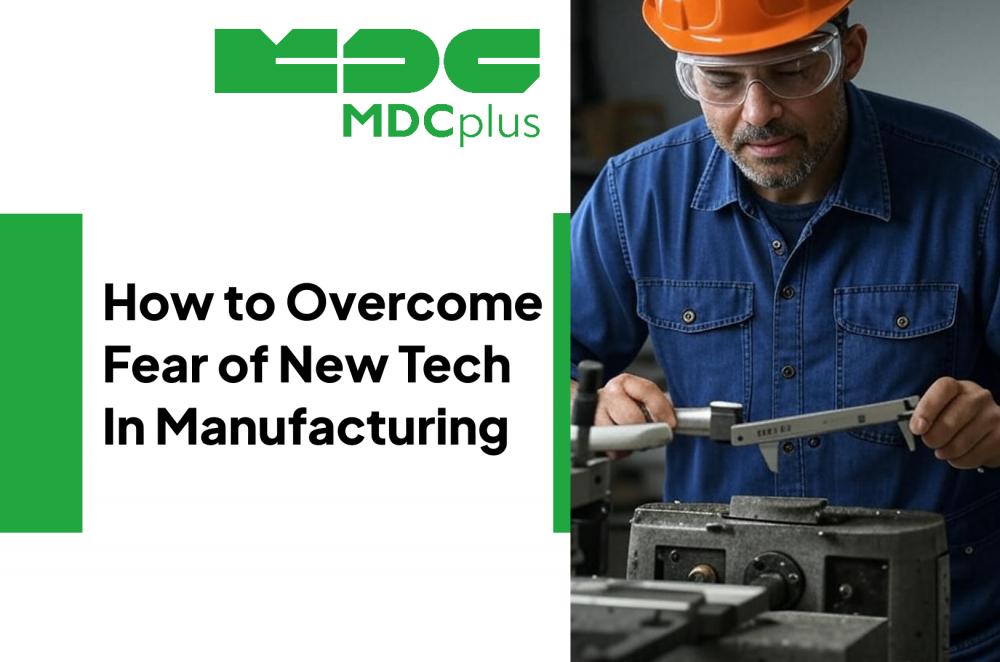How to Overcome Fear of New Tech on the Manufacturing Shop Floor
For many shop owners, the biggest hurdle in improving operations isn’t money, machines, or even training. It’s fear - specifically, the fear of making the wrong move with new technology.
- Will it work?
- Will my team use it?
- Will it slow us down instead of speeding us up?
This hesitation is understandable. Especially if your shop has been running for 10, 20, or 30 years with trusted people and familiar tools. Change always feels like a risk - until doing nothing becomes the bigger one.
Why the Hesitation Happens
Implementing new tech feels risky because it threatens the balance of what already works - even if it doesn’t work perfectly.
Most common objections include:
“We don’t have time to babysit a system.”
“What we do is too custom - software can’t keep up.”
“Our guys won’t trust it.”
“We tried something years ago and it didn’t stick.”
But here's the truth: the longer you wait, the wider the gap grows between how your shop runs and how your competitors operate. Technology isn't just changing how things get made - it's changing who gets the work.
The Real Risk Is Standing Still
Shops that resist change usually have the same story: great people, capable machines, but unclear visibility and unpredictable performance.
You can’t quote confidently if you don’t know real cycle time.
You can’t scale if your best operator holds everything in his head.
You can’t improve if no one’s tracking where time is lost.
The solution isn’t to replace experience - it’s to support it. And that’s where modern tools come in.
Start Small, but Real
You don’t need to launch a full smart factory. The most successful tech adoptions start small:
One or two connected machines
A simple system to track machine uptime
A tool life counter built into your control
A shared log of setups, shift notes, or offsets
What matters is that it solves a real, everyday problem - not that it checks a box for “digital transformation.” When operators see a system that saves them time, not creates more work, they buy in.
Earning Trust - Especially from Experienced Operators
Older machinists often carry the most knowledge, and the most skepticism. If they feel like a new system is designed to “monitor” them, not help them, they’ll resist. And rightly so.
Here’s how to avoid that trap:
Involve them early. Ask where they lose time. What frustrates them? What would they fix?
Let the results speak. If a simple monitoring dashboard shows where setups go long, or when a machine goes idle, let the team help solve it - not feel blamed for it.
Build feedback loops. Use a whiteboard, a Slack channel, or just a clipboard where operators can share tips or flag issues.
Don’t hide the ‘why.’ Be honest: you're not doing this to cut jobs - you're doing it to stay competitive, quote faster, and win better work.
Change that looks like collaboration gets traction. Change that looks like surveillance dies quickly.
The Competitive Advantage Hiding in Plain Sight
Every shop says they want to be more efficient. But few can prove - with numbers - how efficient they really are. That’s your edge.
When you can show actual machine availability, track tool wear predictively, reduce scrap with setup logs, and quote based on clean cycle time data - you win trust from customers, not just operators.
You quote faster. You win jobs with tighter deadlines. You run leaner without burning out your team. And you finally answer questions like: Do we really need another machine? Or do we just need to use the ones we have better?
Final Thought
You don’t need to go all in at once. But you do need to move. Start with one problem worth fixing. Show it matters. Let your team take part in solving it. Then build from there.
Technology isn't the threat. Stagnation is.
The best-run shops in five years won’t be the ones with the fanciest dashboards. They’ll be the ones that made their people smarter, their machines more available, and their decisions less reactive.
Let change be small, but deliberate. Let results do the convincing.
And let the future start one tool, one screen, one hour at a time.
About MDCplus
Our key features are real-time machine monitoring for swift issue resolution, power consumption tracking to promote sustainability, computerized maintenance management to reduce downtime, and vibration diagnostics for predictive maintenance. MDCplus's solutions are tailored for diverse industries, including aerospace, automotive, precision machining, and heavy industry. By delivering actionable insights and fostering seamless integration, we empower manufacturers to boost Overall Equipment Effectiveness (OEE), reduce operational costs, and achieve sustainable growth along with future planning.
Ready to increase your OEE, get clearer vision of your shop floor, and predict sustainably?
